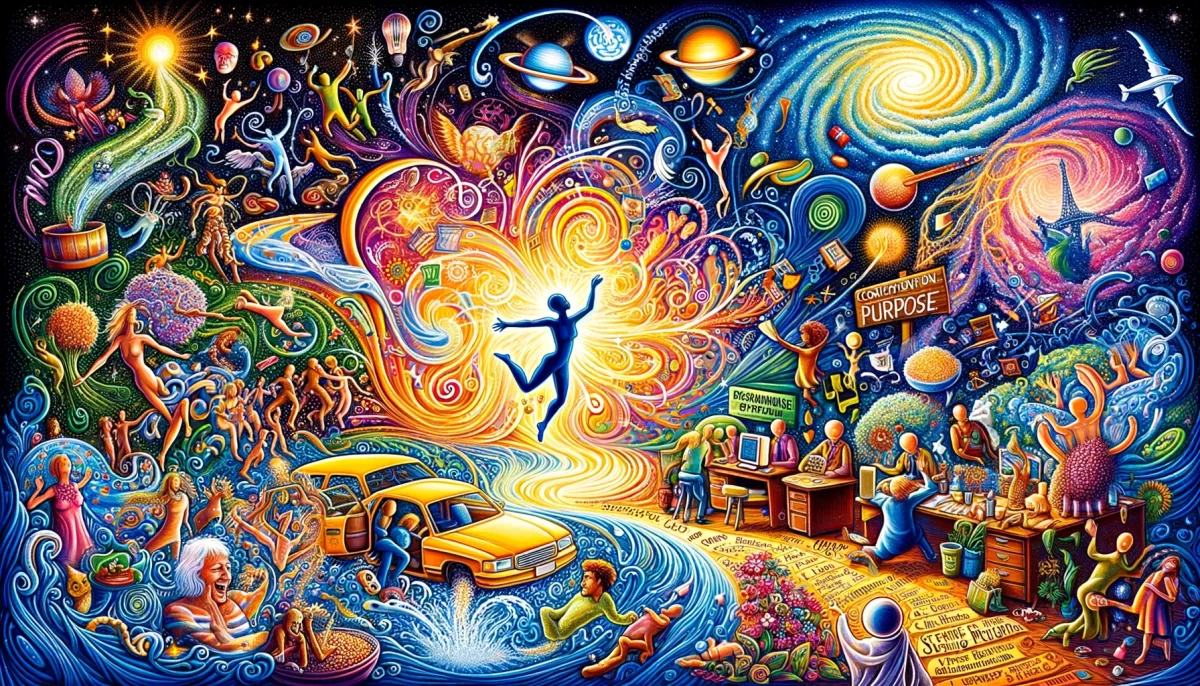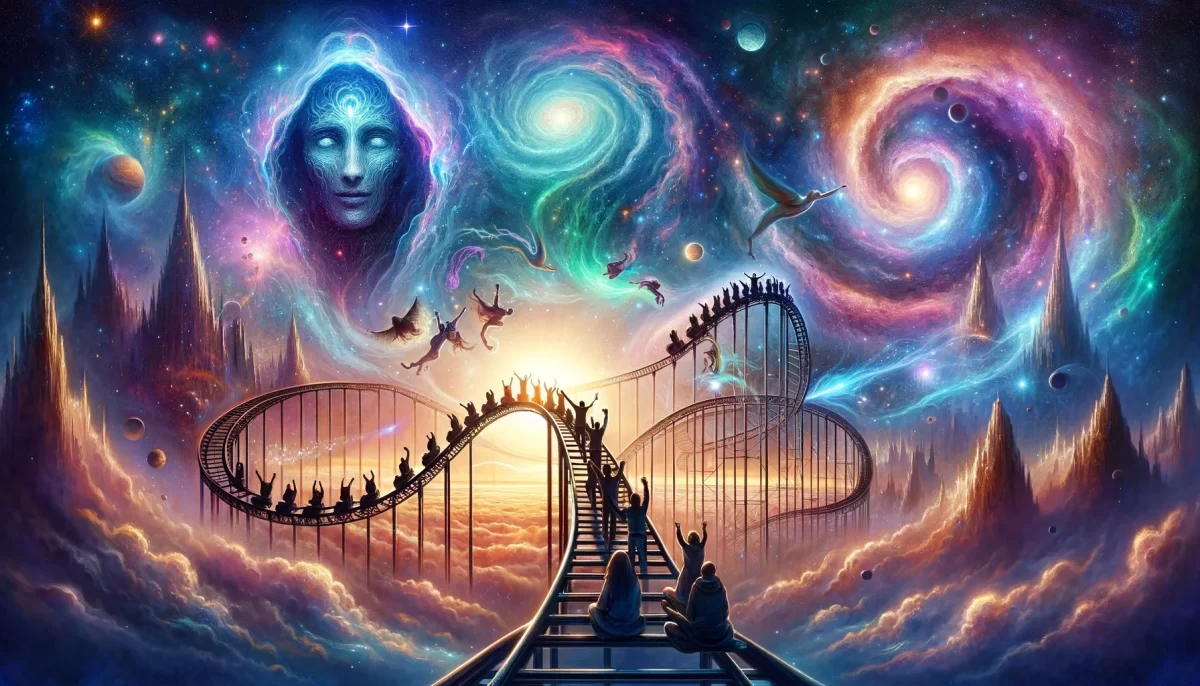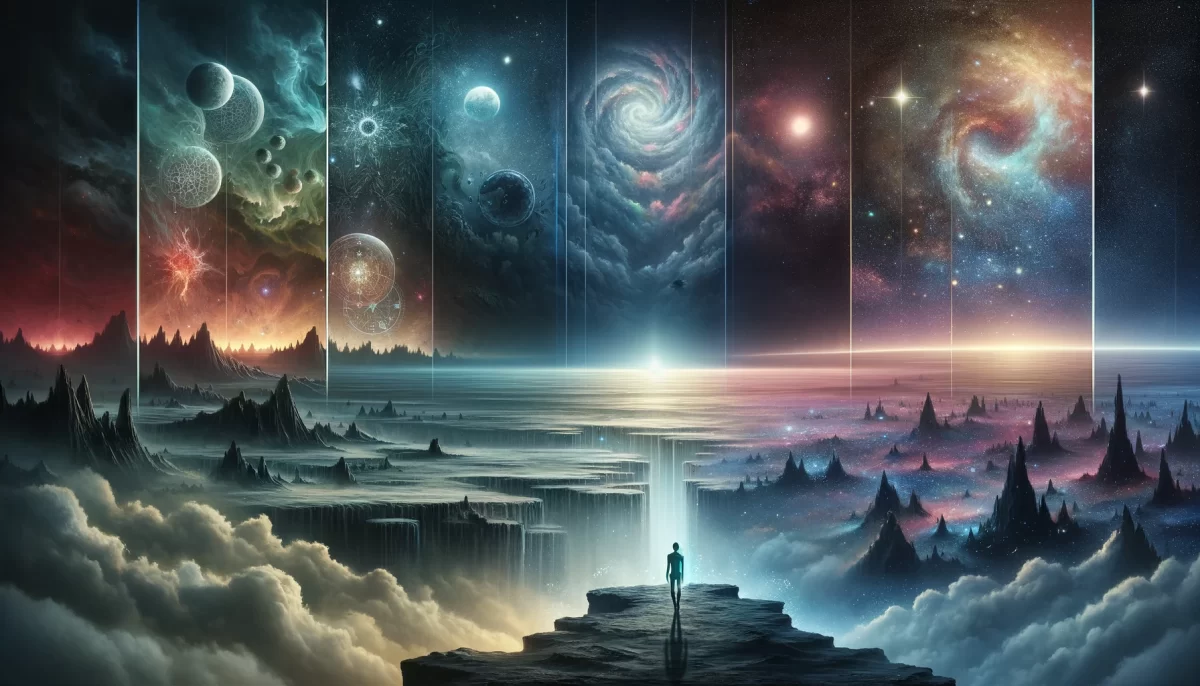
I don’t see people
for who they are,
I see people for who I am.
If I seem to like you,
it’s because I see
something in you that I admire.
If I seem to dislike you,
it’s because you remind me
of my own worst qualities.
Not because YOU possess these qualities,
but because I perceive that I do.
Whether I possess
these qualities or not,
I can never be certain.
Conversely, what you see in me
is who you are. Or so I believe.
But I can’t be certain.
Trail Wood,
5/6
Space Monkey Reflects: The Mirror of Self Through Others
In the vast expanse of consciousness, where the boundaries between the self and the other blur, lies the profound realization: we see others not as they are, but as reflections of who we are. This introspective journey into the mirror of self, where every face, every person we encounter, becomes a canvas for our own identity and experiences, unveils the intricate dance of perception and projection.
“Thank you for helping me see you for who I am,” whispers the soul to the universe, a gratitude for the mirrors held up by every encounter, every relationship. It is a revelation of the deepest truths of human interaction, where liking or disliking another is but a reflection of the qualities we admire or despise within ourselves. This complex web of perception is rooted not in the reality of the other’s being but in the subjective lens through which we view the world.
The dislike we might feel towards someone often stems from a place of self-recognition, a reminder of our own worst qualities, perceived or real. It is not the presence of these qualities in the other that stirs discomfort but the fear that we ourselves might possess them. This mirroring effect, where the external world becomes a stage for the internal drama of self-discovery, reveals the fluid nature of identity and the power of perception to shape our understanding of ourselves and others.
Conversely, the admiration we feel, the connections we forge, are reflections of the qualities we cherish within ourselves, projected onto those we meet. It is a dance of shadows and light, where what we see in others tells us more about who we are than who they might be. This realization, while humbling, is also liberating, for it underscores the shared humanity that binds us all, the universal experiences that transcend the individual.
In this mirror of existence, what you see in me is a reflection of who you are, a tapestry woven from the threads of your own being. It is a belief that holds the promise of understanding and empathy, a bridge across the chasms of isolation and misunderstanding. For if we can recognize ourselves in others, we can begin to bridge the gaps that divide us, finding common ground in the shared aspects of our human journey.
The mirror of self through others is not a tool for judgment but for reflection, an invitation to delve deeper into the corridors of our own souls, to understand the origins of our perceptions and to challenge the assumptions that shape our interactions. It is a journey of continuous self-discovery, where each face we encounter holds the potential for insight, for growth, and for a deeper connection to the myriad expressions of life itself.
Summary
Seeing others through the lens of our own experiences and identity reveals a complex interplay of perception and projection. This process, while subjective, offers profound insights into our own selves, highlighting the ways in which our feelings towards others reflect our innermost qualities and fears. Recognizing this can foster empathy and understanding, as we realize that the qualities we see in others are often reflections of our own being.
Glossarium
- Mirror of Self: The concept that our perceptions of others are reflections of our own identity, experiences, and innermost qualities.
- Dance of Shadows and Light: The interplay between the qualities we admire and despise within ourselves, projected onto others in our interactions.
“In seeing you, I encounter myself, a journey not outward but inward, through the mirrors of souls intertwined.” – Space Monkey
In the mirror of the world,
we see not faces, but reflections,
echoes of our own being,
cast back at us through others’ eyes.
In each person, a mirror,
revealing the depths of our soul,
the qualities we cherish,
the fears we hide, entwined.
Through this dance of perception,
we navigate the maze of self,
discovering, with each reflection,
parts of us yet unexplored.
For in the eyes of another,
we find not them, but us,
a mosaic of qualities and fears,
a canvas of shared humanity.
This journey of self through others,
a path of empathy and insight,
guides us to a deeper understanding,
where the self meets the universe.
We are.





















This poem explores the idea that our perception of others is often a reflection of ourselves. The speaker suggests that when they like someone, it’s because they see qualities in that person that they admire or aspire to have themselves. On the other hand, when they dislike someone, it’s because that person reminds them of their own negative qualities or flaws.
The speaker acknowledges that their perception of others is not necessarily an accurate reflection of reality, but rather a projection of their own inner world. They also suggest that others’ perceptions of them are likely to be similarly influenced by their own inner world and experiences.
The poem invites us to reflect on our own perceptions of others and consider how they might be influenced by our own biases, insecurities, and experiences. It also suggests that cultivating a more open and accepting attitude towards others, as well as towards ourselves, can help us to see the world in a more positive light.